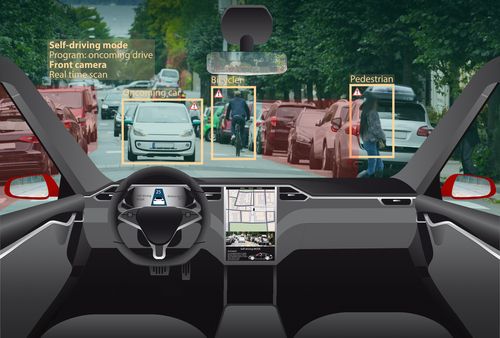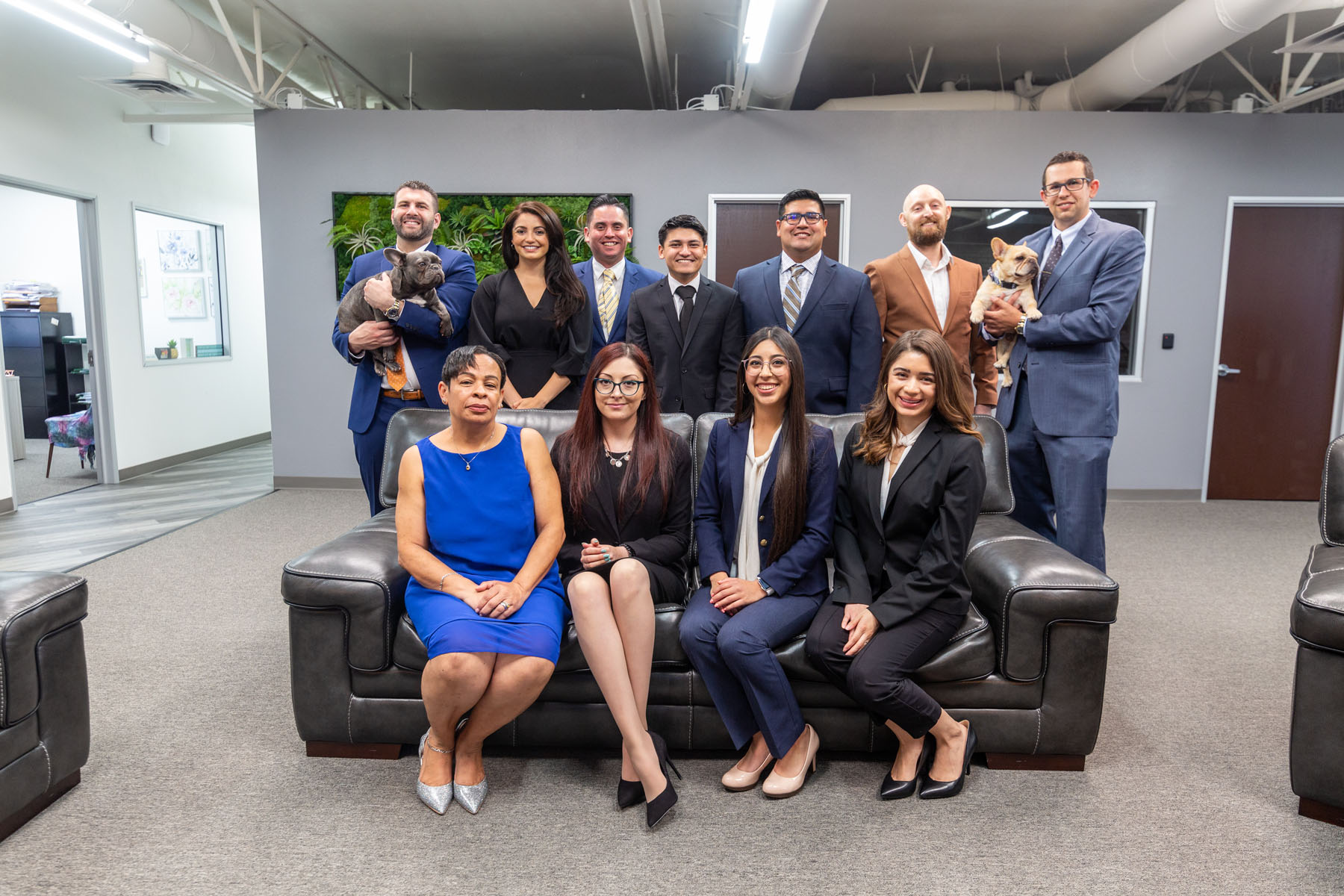The arrival of autonomous cars has been making the news for several years now. While the idea of a self-driving car sounds exciting and futuristic, the deadly Tesla accident that occurred last month has drivers wondering if the car companies push the technology on the public before it is ready.
Not only is the introduction of autonomous cars challenging the way we drive, it’s also forcing us to look at car accidents differently. One of the most significant responsibilities of a personal injury attorney is to prove the other driver in an accident is at fault. Now, the question shifts to “Who causes the accident when the car is its own driver?” To get a better idea of what really takes place, you need to understand how Tesla’s Autopilot works and the facts of the Tesla Accident.

Tesla Autopilot: The Same Thing as Autonomous?
The Tesla Company does not describe their vehicles as being autonomous or self-driving. Instead, they fit all of their vehicles with “self-driving hardware” as standard. The Autopilot feature is offered as an option and it comes with a big price increase over the base cost of the car.
There are two levels of Autopilot available; Enhanced and Full Self-Driving Capability. With the Enhanced option, the car matches traveling speed to the traffic conditions, stays within the traveling lane, changes freeways, exits when it nears your destination, and self-parks. Autopilot even affords the driver the luxury of summoning their vehicle to and from their garage.
The software required for Full Self-Driving Capability is not yet available from Tesla. While Tesla explains that Enhanced Autopilot is a driving assistance feature and the driver is responsible for control of the vehicle at all times, the future version will conduct both short and long trips without any input from the driver.
The Tesla Accident
On March 23, 2018, what was touted as the first Autopilot-related fatality occurred. In reality, it is the second death of its kind. The first was on May 7 of 2016 when Danny Yadron’s Tesla failed to distinguish the white color of a tractor-trailer as it crossed the highway with a brightly lit sky as its backdrop.
The more recent accident happened for a different reason. Driver Walter Huang had Autopilot engaged on his car with the adaptive cruise control follow-distance on the minimum setting. The car crashed into a concrete divider and burst into flames.
The crash attenuator, a safety barrier the highway department uses to lessen the impact if a vehicle strikes the concrete divider, had been previously struck and damaged by another car. The condition of the safety barrier resulted in the most severe damage ever seen to a Model X from a crash.

Are the Odds in Tesla’s Favor?
The car maker claims that while there is no real method of preventing all car accidents, their cars equipped with Autopilot are statistically much safer than regular cars. But are they?
Tesla worked with the National Transportation Safety Board (NTSB) and California Highway Patrol’s Multidisciplinary Accident Investigation Team to examine the restraint control module and infotainment module after the accident. Vehicle logs showed that Mr. Huang received multiple visual warnings and one audible hands-on warning earlier on. Still, the company says, during the six seconds prior to the crash, his hands were not detected on the steering wheel. This information insinuates that had Mr. Huang heeded the warnings, he would have had five seconds and 150 meters of travel time with an unobstructed view of the divider.
One might wonder why Mr. Huang would have ignored the warnings and simply chosen not to take control of the vehicle. After hearing from Walter Huang’s brother Will, other questions arise.
Will claimed that Walter had complained between seven and ten times about the car swiveling toward the same barrier that caused the fatal crash. He claimed that Walter had even taken the car to a dealership but they were unable to duplicate the response.
Tesla wouldn’t respond to reporters about this claim but they did direct them to a blog post showing related statistics. The company’s data shows that Tesla drivers have made about 85,000 trips along that same stretch of highway without incident.
Meanwhile, the 38-year-old Apple engineer’s wife and two children no longer have their loved one for companionship and financial support. Friends and family are working to raise money to pay Huang’s funeral expenses and their continuing financial needs.
Tesla has offered their condolences to Huang’s family and friends, explaining that their Autopilot isn’t perfect but it does save lives. The company explains this by stating that there is one automotive fatality every 86 million miles, including all makes and models of vehicles in the US. Tesla includes one fatality every 320 million miles among those vehicles equipped with Autopilot. The company determines that drivers with Autopilot hardware are 3.7 times less likely to become a fatality.
Others claim that the statistics are skewed due to the sample size the company uses to base their claims on. While two fatalities are much more acceptable than the large number of fatalities that occur on this country’s highways each day, things could potentially get worse. It all comes down to whether it was a flaw in the design of the Autopilot software, driver error, or the fault of the state highway department.
The Tesla Accident from a Personal Injury Standpoint
The person or entity who is liable for a personal injury or a wrongful death is the one who caused the accident through negligence. When the accident is a car accident, it is usually the other driver who is at fault. Now that self-driving cars are on our roads, that statistic is likely to change.
Faulty design or manufacture of a product is also negligence. If the Tesla accident resulted because the Autopilot didn’t perform as intended, the fault falls back on the Tesla Company. It doesn’t matter that Autopilot has only been connected with two fatalities. Every injury and wrongful death is important; especially to the victim’s family and friends.
There’s also the issue of the damaged safety barrier. Safety experts compare the impact of hitting the concrete divider with the accident that killed Dale Earnhardt in the Daytona 500. Any time a vehicle stops suddenly due to an impact, the results are severe.
The damage to the safety barrier occurred eleven days prior to the Tesla crash when 31-year-old James Barboza crashed his Prius into it at 70 miles per hour. The protection afforded by the intact barrier limited Barboza’s injuries to lacerations to his face and complaints of pain in his arms, legs, face, and back.
Repairing the safety barrier is the responsibility of CalTrans. They sent a response to ABC7 News confirming that their policy is to fix such barriers within seven days or five business days when weather permits. According to the company, inclement weather played a role in the delay in getting the safety barrier repaired.
The response from CalTrans also says they made efforts to place cones or safety barricades at the site as soon as they became aware of the damage. The work to replace the barrier was scheduled but not completed in time to prevent the Tesla accident that caused Mr. Huang’s death. Even if this is the case, cones and other unmoving objects are some of the factors that Tesla still hasn’t conquered. Others include:
- Going over bridges
- Inclement weather
- Roads that lack clear lane markings
- Driving in cities
- Driving at high speeds
Another problem that self-driving vehicles have is one of the same things that supposedly makes them safer: The inability to think and react like a human. You never know what another driver might do. A robotic car assumes that the other driver will follow the rules of the road. When they don’t, they lack the ability to react in the same way that we as humans do.
The introduction of driverless cars to a network of imperfect roads and highways might be an invitation for disaster. One thing the Tesla accident proves is that there is still a lot of room for improvement.
Right now, the most important question is “Who is responsible for the loss to Mr. Huang’s family?” Experts continue to investigate the conditions that led to the accident. It is quite possible that the conclusion will point in more than one direction.
One might argue that CalTrans isn’t responsible for maintaining the conditions of the roads to meet the needs of autonomous cars. But the damaged barrier is a safety device that prevents crashes from being as severe no matter what kind of vehicle is involved. The accident that caused the barrier to become damaged in the first place proved the barrier’s effectiveness.
One thing that is certain is that someone was at fault in the Tesla accident. If you or a loved one is the victim of a personal injury or wrongful death, contact Batta Fulkerson to schedule a free evaluation of your case. You have a right to get compensated for your loss.




